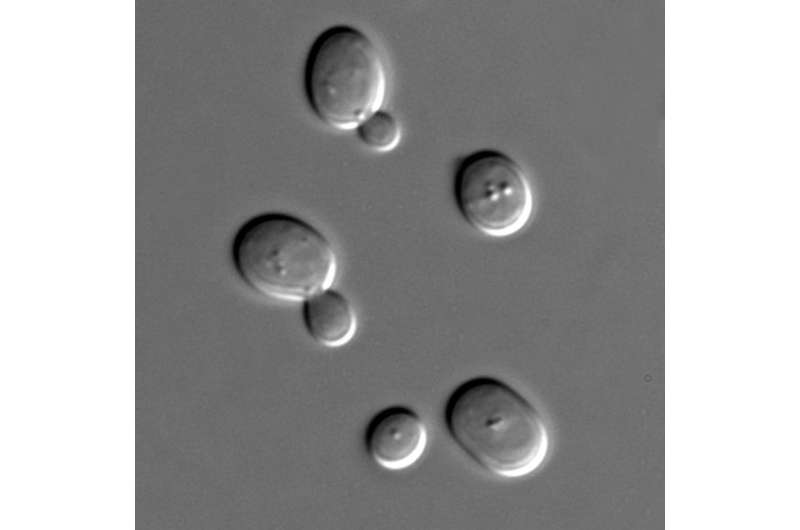February 25, 2016 report
Yeast study offers evidence of superiority of sexual reproduction versus cloning in speed of adaptation

(Phys.org)—A team of researchers with Harvard University has conducted a series of experiments that has led to evidence showing that sexual reproduction allows for speedier adaptation than does cloning, helping to explain why sexual reproduction has continued to exist despite it being so much more complicated than cloning. In their paper published in the journal Nature, the team describes their experiments and explain why they believe their results help show why it is that sexual reproduction continues to persist in nature. Matthew Goddard with the University of Lincoln in the U.K. offers a News & Views piece on the work done by the team in the same journal issue, outlining what the team has accomplished and highlighting work yet to be done.
For many years, as Goddard explains, scientists have been scratching their heads trying to figure out why sexual reproduction exists—cloning, he points out, is much less complicated (there is also the added complications and risks inherent in the birth process), and therefore should have won out as the primary means of reproducing. The answer to why it hasn't, some researchers believe, lies in the way genes mutate. Sexual reproduction, they note, involves recombination of chromosomes from both parents and the separation of them in reproductive cells—cloning in contrast, is much more straightforward, fitness and selection are impacted only by the fitness of the genome. Because of these differences, some researchers have suggested that sexual reproduction exists because it allows for speedier adaption than does cloning, but until now, no one has been able to find a way to prove it. In this latest effort the researchers appear to have come close, by identifying mutations that arose in yeast populations.
The team caused populations of asexual and sexual yeast to grow and multiply over 1000 generations in their lab, stopping by on a regular basis to note what was occurring, using DNA sequencing to track single base mutations. The researchers report that initially, ranges of mutations were mostly similar, but over the longer term, the researchers found that with the sexual population, fewer mutations became fixed, which suggested better efficiency at adapting than the asexual populations.
The researchers suggest theirs is the first such experiment to offer such results, but acknowledge that there is still work to be done—yeast has only one copy of each chromosome; whether the same results would hold, Goddard notes, when there is two is not clear. He notes also that the team primarily focused on single DNA bases and thus it is not clear if they would have achieved the same outcome when whole segments of DNA were involved. Also, there is still the big question of how or why sexual reproduction came about in the first place.
More information: Michael J. McDonald et al. Sex speeds adaptation by altering the dynamics of molecular evolution, Nature (2016). DOI: 10.1038/nature17143
Abstract
Sex and recombination are pervasive throughout nature despite their substantial costs1. Understanding the evolutionary forces that maintain these phenomena is a central challenge in biology. One longstanding hypothesis argues that sex is beneficial because recombination speeds adaptation4. Theory has proposed several distinct population genetic mechanisms that could underlie this advantage. For example, sex can promote the fixation of beneficial mutations either by alleviating interference competition (the Fisher–Muller effect) or by separating them from deleterious load (the ruby in the rubbish effect). Previous experiments confirm that sex can increase the rate of adaptation, but these studies did not observe the evolutionary dynamics that drive this effect at the genomic level. Here we present the first, to our knowledge, comparison between the sequence-level dynamics of adaptation in experimental sexual and asexual Saccharomyces cerevisiae populations, which allows us to identify the specific mechanisms by which sex speeds adaptation. We find that sex alters the molecular signatures of evolution by changing the spectrum of mutations that fix, and confirm theoretical predictions that it does so by alleviating clonal interference. We also show that substantially deleterious mutations hitchhike to fixation in adapting asexual populations. In contrast, recombination prevents such mutations from fixing. Our results demonstrate that sex both speeds adaptation and alters its molecular signature by allowing natural selection to more efficiently sort beneficial from deleterious mutations.
Journal information: Nature
© 2016 Phys.org



















